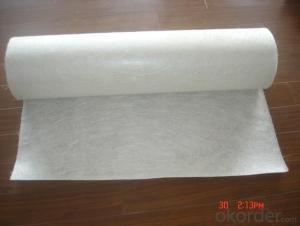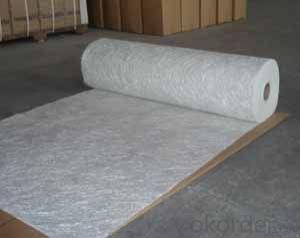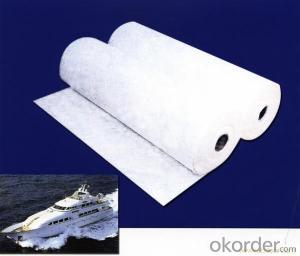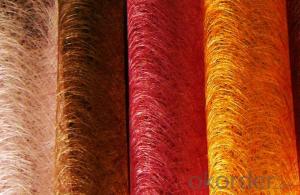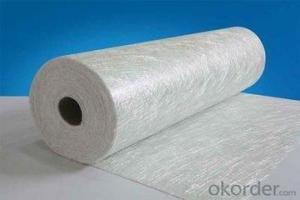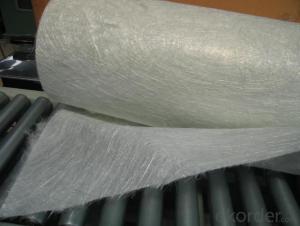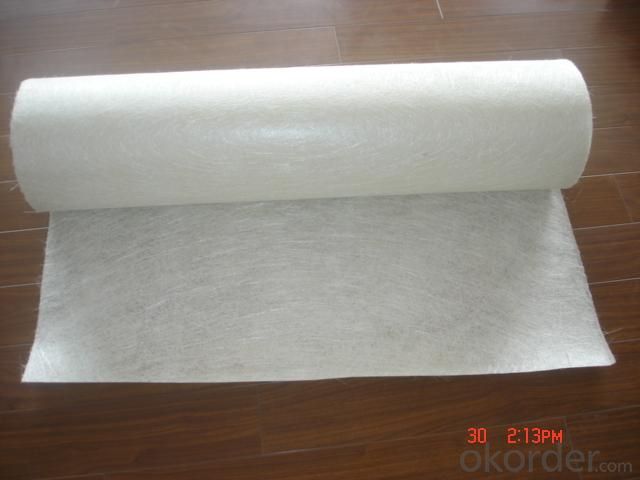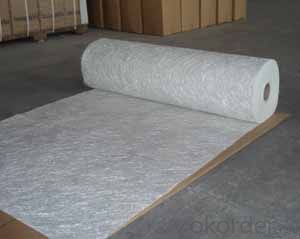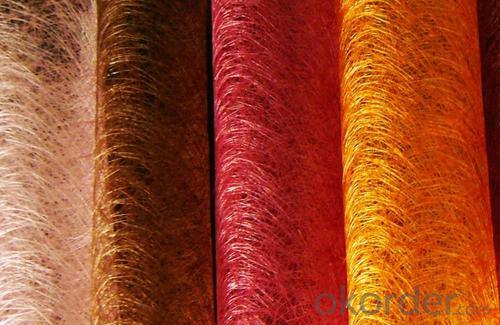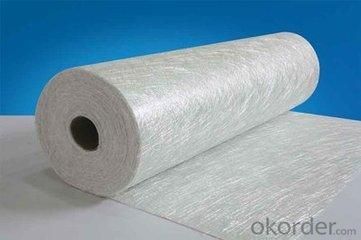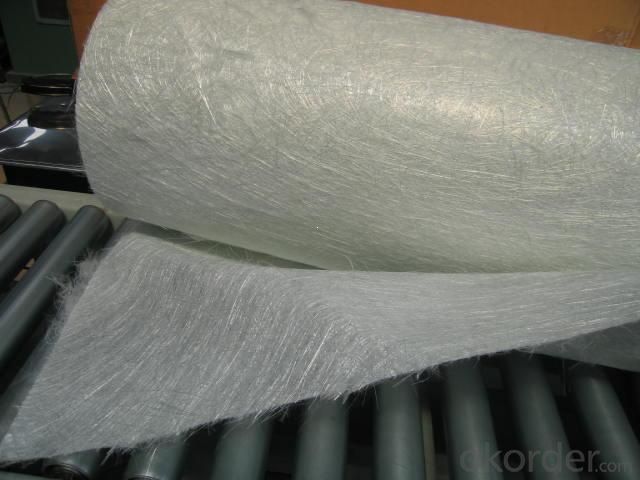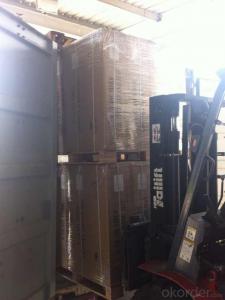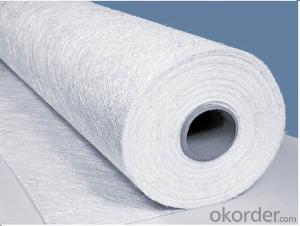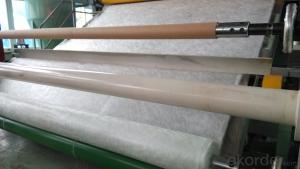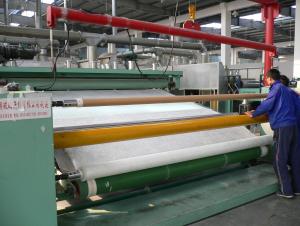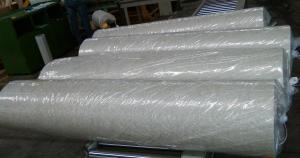Fiberglass Mat Tissue 2024 e-glass Assembled Roving for Chopped Strand Mat
- Loading Port:
- Tianjin
- Payment Terms:
- TT OR LC
- Min Order Qty:
- 100 m.t.
- Supply Capability:
- 20000 m.t./month
OKorder Service Pledge
OKorder Financial Service
You Might Also Like
Quick Details
| Place of Origin: | Hebei, China (Mainland) | Brand Name: | CNBM | Model Number: | YY-ER-CSM |
| Application: | FRP Steel, rod, stick, grating, channel,pipe | Surface Treatment: | Vinyl Coated | Technique: | Winding Filament Roving |
| Dimensions: | E-glass assembled roving | Name: | E-glass assembled roving for chopped strand mat | Type: | E-Glass |
| Yarn Structure: | Single Yarn | Fiber type: | Single-end roving | Compatible resin: | UP, EP, VE, Phenolic resin. etc. |
| Tex Count: | 200-9600tex | Color: | White | Filament Diameter: | 9-24um |
Packaging & Delivery
| Packaging Details: | cartons or pallets,customer request |
| Delivery Detail: | 7-15 days after order confirmed |
Product Description
E-Glass Assembled Roving for Chopped Strand Mat is compatible with Unsatured Polyester (UP),Vinylester (VE) and Epoxy (EP).It is mainly used in the production of powder and emulsion bonded Chopped Strand Mat and also Stitched Combo Mat . It can be used in FRP boats , sanitary apparatus and so on .
Product Feature:
1. Good choppability
2. Excellent dispersion , no matchstick
3. Good anti-static properties
4. Good wet-out in resin
picture
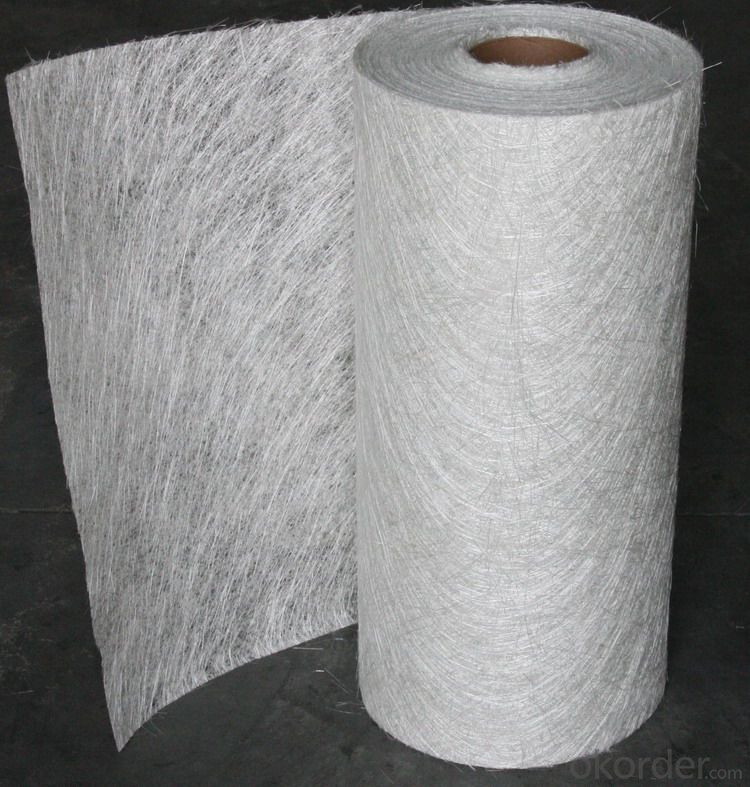
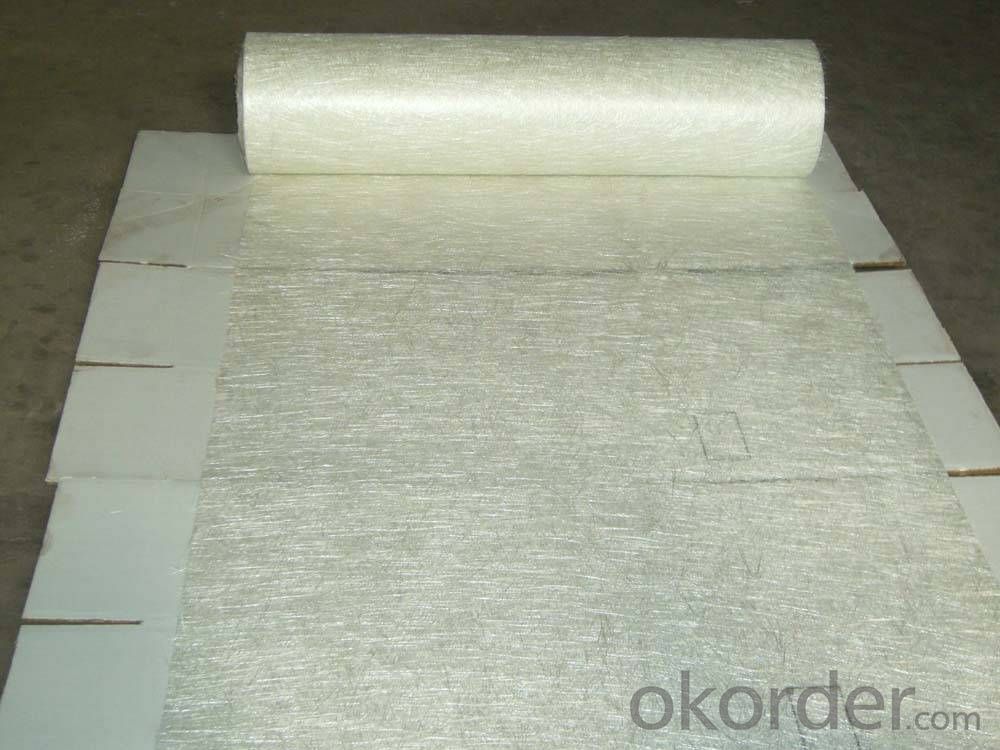
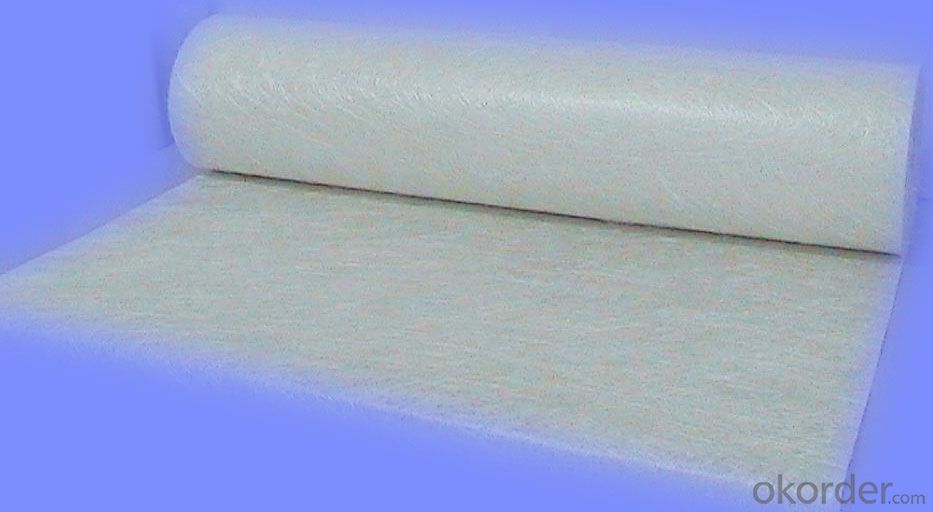
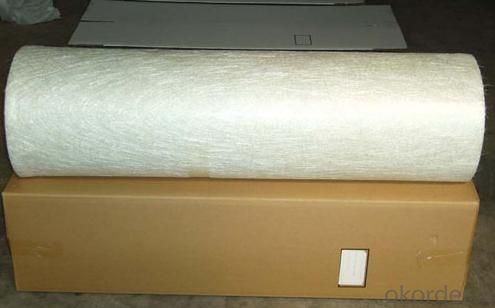
- Q: Can fiberglass mat tissue be used for reinforcing fiberglass pools?
- Yes, fiberglass mat tissue can be used for reinforcing fiberglass pools. Fiberglass mat tissue is a thin, flexible material that is commonly used in the construction and repair of fiberglass structures, including pools. It is made up of fine glass fibers that are bonded together with a binder. When applied to the surface of a fiberglass pool, the mat tissue provides additional strength and reinforcement, helping to prevent cracks or damage. It is typically applied in conjunction with a fiberglass resin, which acts as an adhesive to bond the mat tissue to the pool surface. Using fiberglass mat tissue for reinforcing fiberglass pools is a common practice and can help to extend the lifespan and durability of the pool.
- Q: What is the typical width of fiberglass mat tissue rolls?
- The typical width of fiberglass mat tissue rolls is around 1 meter or 3 feet.
- Q: What is the thermal conductivity of fiberglass mat tissue?
- The thermal conductivity of fiberglass mat tissue is typically low, ranging from 0.03 to 0.06 W/m·K.
- Q: Can fiberglass mat tissue be used for mold-making?
- No, fiberglass mat tissue is not typically used for mold-making. Fiberglass mat tissue is a lightweight material made from randomly oriented glass fibers bonded together with a binder. It is commonly used in insulation, construction, and automotive industries for reinforcement purposes. For mold-making, other materials such as silicone, latex, or polyurethane are more commonly used. These materials have the necessary properties to create flexible and accurate molds that can reproduce intricate details. They are also easy to work with and can be poured or brushed onto the original object to create a mold. Fiberglass mat tissue, on the other hand, lacks the flexibility and accuracy required for mold-making. It is not designed to be easily molded into complex shapes or capture fine details. Additionally, it may not provide the desired level of flexibility needed to remove the original object from the mold without causing damage. Therefore, it is recommended to use specific mold-making materials that are specifically designed for this purpose, rather than attempting to use fiberglass mat tissue.
- Q: Is fiberglass mat tissue suitable for aerospace applications?
- Fiberglass mat tissue proves to be a suitable choice for aerospace applications. Its lightweight composition and remarkable durability render it an excellent option for critical aerospace uses where reducing weight and ensuring structural integrity are of utmost importance. Typically employed as a reinforcing material in composite structures and aerospace components like wings, fuselages, and engine parts, fiberglass mat tissue provides exceptional impact resistance, commendable thermal stability, and minimal moisture absorption. These vital characteristics enable it to withstand the challenging conditions and extreme temperatures encountered in aerospace environments. Moreover, fiberglass mat tissue exhibits commendable electrical insulation properties, making it well-suited for applications requiring effective electrical shielding. Overall, owing to its outstanding mechanical properties, lightweight essence, and ability to endure the demanding circumstances prevalent in aerospace applications, fiberglass mat tissue stands as a dependable and extensively utilized material within the aerospace industry.
- Q: Can fiberglass mat tissue be used for electrical insulation?
- Fiberglass mat tissue can indeed serve as electrical insulation due to its impressive properties. Composed of fine glass fibers, this non-woven fabric possesses exceptional electrical insulation capabilities. Its ability to endure high temperatures and exhibit a high dielectric strength renders it ideal for a range of electrical applications. For instance, it finds regular use as an insulation material in electrical transformers, motors, generators, and other electrical equipment. By creating a barrier that hinders the passage of electrical current, the fiberglass mat tissue safeguards the components against potential electrical shocks or short circuits. Moreover, it boasts resistance against moisture, chemicals, and UV radiation, thereby further enhancing its suitability for electrical insulation purposes.
- Q: Does anyone know the hardness value of the heat conductive gasket? Does it contain the hardness of the carrier (glass fiber)?
- The purpose of glass fiber is to make the product more convenient for processing, containing a layer of glass fiber cloth, then the operation process is not easy to damage thermal conductive gasket
- Q: Is fiberglass mat tissue suitable for insulation in food processing facilities?
- Fiberglass mat tissue is not a suitable choice for insulation in food processing facilities due to its intended use as a reinforcement in composites, such as roofing and construction materials, rather than meeting the specific requirements of food processing environments. In order to ensure the safety and compliance of food processing facilities, it is necessary to use insulation materials that are safe, durable, and in accordance with strict health and safety regulations. Fiberglass mat tissue lacks these essential characteristics and may potentially endanger food safety. To address this issue, it is recommended to utilize insulation materials that are specifically designed for food processing facilities. These materials should be non-toxic, resistant to moisture, mold, and bacteria, and capable of withstanding high temperatures and frequent cleaning and sanitization procedures. Some examples of appropriate insulation materials for food processing facilities include closed-cell foam, mineral wool, and polyisocyanurate (PIR) foam. These materials have undergone extensive testing and have been proven to meet the necessary standards and regulations for use in food processing environments. Given the importance of prioritizing the safety and hygiene of food processing facilities, it is advisable to seek guidance from experts or insulation specialists who possess the knowledge and expertise to recommend the most suitable and compliant insulation options for these facilities.
- Q: What are the properties of fiberglass mat tissue?
- Fiberglass mat tissue, also referred to as fiberglass mat or fiberglass matting, is a non-woven material made from glass fibers, possessing numerous properties that render it suitable for diverse applications. 1. With regards to strength and durability, fiberglass mat tissue is renowned for its high tensile strength, enabling it to endure substantial stress without fracturing. This quality makes it ideal for fortifying and reinforcing various materials and structures. 2. Despite its strength, fiberglass mat tissue remains relatively lightweight, facilitating easy handling and transportation. This characteristic proves particularly advantageous in industries where weight reduction plays a crucial role, such as aerospace and automotive. 3. The flexibility of fiberglass mat tissue allows it to conform to curved surfaces and intricate shapes. Consequently, it proves versatile and appropriate for applications requiring the material to be molded or shaped into specific designs. 4. Fiberglass mat tissue exhibits excellent resistance to various chemicals, including acids, alkalis, and most solvents. This attribute renders it suitable for use in corrosive environments, such as chemical processing plants or storage tanks. 5. Fiberglass mat tissue possesses commendable thermal insulation properties, effectively reducing heat transfer. Consequently, it proves valuable in applications necessitating heat insulation, such as the construction of walls, roofs, or insulation boards. 6. Inherently fire-resistant, fiberglass mat tissue does not contribute to the propagation of flames. As a result, it finds extensive use in applications where fire safety is paramount, such as the production of fire-resistant doors, panels, or insulation materials. 7. Furthermore, fiberglass mat tissue offers excellent sound insulation properties, diminishing the transmission of noise through walls or other structures. This characteristic renders it suitable for implementation in soundproofing applications, such as recording studios or automotive interior panels. Overall, the properties exhibited by fiberglass mat tissue endow it with versatility, allowing for a wide range of applications across various industries, including construction, automotive, aerospace, and marine. Its strength, flexibility, lightweight nature, chemical resistance, thermal and sound insulation properties, as well as its fire resistance, contribute to its popularity and usefulness in numerous applications.
- Q: Does fiberglass mat tissue require any special precautions during cutting?
- Yes, fiberglass mat tissue does require special precautions during cutting. Fiberglass mat tissue is made up of fine strands of glass, which can be dangerous if inhaled or come into contact with the skin. Therefore, it is important to take certain precautions to minimize the risks associated with cutting fiberglass mat tissue. Firstly, it is advisable to wear proper personal protective equipment (PPE) such as gloves, safety glasses, and a dust mask or respirator. This will help to protect your skin, eyes, and respiratory system from any potential harm. Secondly, when cutting fiberglass mat tissue, it is recommended to use tools specifically designed for fiberglass cutting, such as a utility knife or a pair of scissors with serrated edges. These tools are designed to minimize the release of loose fibers and reduce the risk of injury. Additionally, it is important to work in a well-ventilated area or use proper dust extraction systems to minimize the release of fiberglass particles into the air. This will help to prevent inhalation of the fibers and reduce the risk of respiratory issues. Lastly, it is crucial to handle cut fiberglass mat tissue with care to avoid any accidental contact with bare skin. If contact occurs, it is recommended to immediately wash the affected area with soap and water and seek medical attention if necessary. Overall, by following these precautions, the risks associated with cutting fiberglass mat tissue can be minimized, ensuring a safe working environment.
Send your message to us
Fiberglass Mat Tissue 2024 e-glass Assembled Roving for Chopped Strand Mat
- Loading Port:
- Tianjin
- Payment Terms:
- TT OR LC
- Min Order Qty:
- 100 m.t.
- Supply Capability:
- 20000 m.t./month
OKorder Service Pledge
OKorder Financial Service
Similar products
Hot products
Hot Searches
Related keywords
